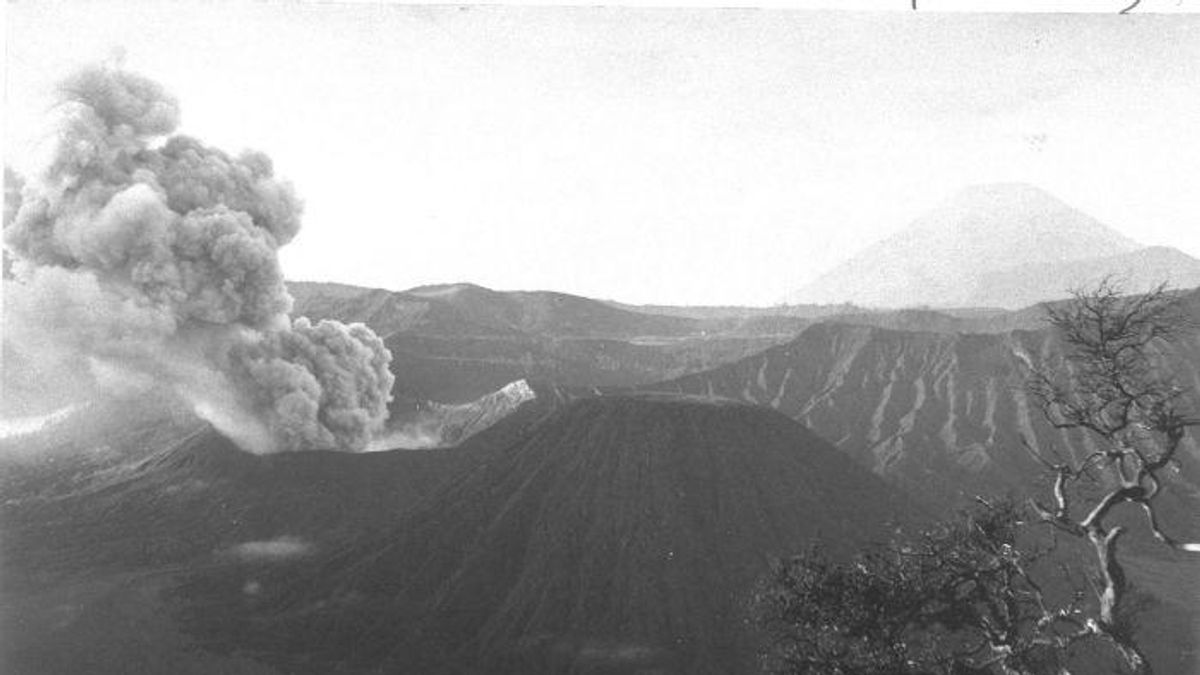JAKARTA - Semeru is the highest mountain on the island of Java. In Hindu cosmology, Semeru is defined as the center of the universe. People call it the mountain where the Gods reside. As a result, Semeru is often actualized as a form of "greatness" because of its height which reaches 3,676 m. For example, Semeru's existence is not only in Dutch documents. Because, Semeru has been present in the ancient manuscript, Tantu Pagelaran from the 15th century.
The presence of Mount Semeru in the Tantu Pagelaran script is proof that the Mount of the Gods is important in civilization in the Land of Java. In the Tantu Pangelaran script, it is told that Mount Semeru originated from India. At that time, Java Island was still tossed about by the ocean. Quoted from Norman Edwin in his writing in Swara Alam Magazine entitled Kameswara Hermitage and Inscription on the Lake (1992), the position of Java Island is described as still not stable in its current position.
Instantly, Batara Guru - the sole ruler - ordered the gods and giants to move Mount Mahameru in India as a ballast. The goal is so that the island of Java does not drift anymore. Both the gods and the giants carried out the orders of the Lord Guru. Lord Vishnu transformed into a big turtle and was not playing, then carried Mahameru. Lord Brahma transformed himself into a very long snake, then wrapped around the mountain so that it could be drawn to the Land of Java.

Mahameru was then placed in the west of Java Island. Because they were unbalanced, they hurriedly moved Mount Mahameru to the east. On the way, some parts of Mahameru scattered and formed mountains along the island of Java. Mahameru was successfully placed in the east.
"But the problem is not over yet, because it turns out that Mount Mahameru is tilting to the north. It was decided to cut off the tip of the mountain, then move it to the northwest and name it Mount Pawitra, Mahameru is Mount Semeru, while Pawitra is now known as Mount Penanggungan, "said Norman Edwin.
The title Mount of the Gods is also legitimized by the story of Mount Semeru as the hermitage of Lord Shiva. To beautify the location of the hermitage, Lord Shiva is said to have made a lake for bathing. That said, the lake is Ranu Kumbolo. These stories are also strengthened by the discovery of ancient sites around Mount Semeru. The best known are the inscriptions at Ranu Kumbolo and Arcapada.
The inscription in Ranu Kumbolo which is in ancient Javanese is thought to have existed since the early 12th century. The messages in the inscription contain writings commemorating the visit of Kameswara, a king from the kingdom of Kediri who made a pilgrimage to a holy bath. It is suspected that the king had also practiced asceticism in the area.
First time climbThe person responsible for introducing Semeru to the world is a Dutch geologist, GF Clingnett. Clingnett, curious about the legend of Semeru, was the first to climb the mountain. According to Carel Willem Wormser in the book The Luxury of Mountains (1928), the owner of the book wrote Clingnet climbing Mount Semeru from the southwest via Widodaren on 19 October 1838. The route is known as a difficult hiking trail. After climbing Clingnet, however, other European climbers appeared one after another.
Some of them include the name of a Dutch botanist, FW Junghuhn who had climbed Semeru from the north via Mount Ayek-Ayek, Mount Ider-Ider, and Mount Kepolo in 1844. After that, the resident of Pasuruan tried his luck to climb Semeru. However, the residents failed to reach the top. Gradually Semeru became popular.
This popularity was due to the tourism agency formed by the Dutch East Indies government (Batavia Vereeniging Toeristenverkeer). The tourist agency with the acronym BVT then listed Semeru as a must-visit tourist destination when visiting Java. Through his guidebook entitled Java The Wonderland (1900), Semeru has become a popular destination when mentioning the East Java region.
“On the way through the streets of Moengal (Mungal), an extraordinary sight was seen from the open in the south. There we see a mountain peak, Smeroe (Semeru), standing majestically, and under the splendor of the dazzling morning sun. Smeroe looks as clear as if we paint our imagination with vivid colors depicting a vast blue sky, accompanied by a stretch of forest covered in green cypresses, "the story of the book Java The Wonderland.
To commemorate Semeru's existence, the general public can still access the diaries of Soe Hok Gie in the Demostran Notes book (2008). Gie, also known as a student activist in the 1960s, described Semeru as a place to find eternal solitude. In addition, the splendor of Semeru can also be seen from a song composed by one of Indonesia's legendary bands, Dewa 19 entitled Mahameru (1994). Here are the lyrics:
Mahameru give him peace
Arcapada frozen inside
Mahameru a legend remains
The eternal pinnacle of the gods.

Mount Semeru first erupted on November 8, 1818. The next major eruption occurred on August 29-30, 1909, known as the Lumajang disaster. Then, there was another big eruption in 1981 that killed hundreds of residents in the surrounding area. In 1942 there was also a large eruption in Semeru. The eruption reached the eastern slopes of Semeru at an altitude of between 1,400 and 1,775 meters.
In 1961 there was a stromboli-type eruption with ash 3,000 m above the summit. Also in 1963, another hot cloud and lava flow reached 8 km from the crater. Since 1967 the activities of Mount Semeru have continued to work on erupting ash and lava.
"In a regular eruption, a pillar of smoke billows up in the form of 'bombs' and ash reaching a height of 300-600 m, above the crater with eruption intervals of 15-30 minutes. In 1968, the growth of the lava dome continued. There was a lava flood which killed three residents of Sumber Wungkil Village. Also in 1977, there was another lava avalanche that produced hot clouds, 'attacked' and destroyed several villages, "wrote Cut Dwi Septiasari in the book Soe Hok Gie: Once Again (2009).
1978 and 1981 also saw eruptions and hot clouds with a maximum sliding distance of 10 km. Also the avalanche of lava domes that produced hot clouds occurred in the late 1990s. For this incident, the Jonggring Seloko crater. Long story short, on December 1, 2020, residents who live on the slopes of Mount Semeru once again had to evacuate. This step was used as an option to avoid the flaring of incandescent lava from the volcano.
The English, Chinese, Japanese, Arabic, and French versions are automatically generated by the AI. So there may still be inaccuracies in translating, please always see Indonesian as our main language. (system supported by DigitalSiber.id)









